Solution | Distribution Spatial Footprint#
Overview#
Business case#
Distribution spatial footprint analysis is a powerful way to optimize retail networks depending on customers, competition, and distribution centers locations: this optimization is particularly critical for retailers.
Fueled with the right data, it can generate up to 20% in sales increase. Achieving these results relies on both global and local network optimizations, for which several use cases can be implemented such as opening/closing/relocating stores, finding the best places for new distribution centers, optimizing marketing campaigns based on local networks specificity etc.
A fundamental aspect of this Solution is the computation of isochrone areas to enrich the input data for geospatial analysis. Isochrone areas are a type of catchment area which represents the area from which a location is reachable by someone within a given amount of time, using a particular mode of transportation.
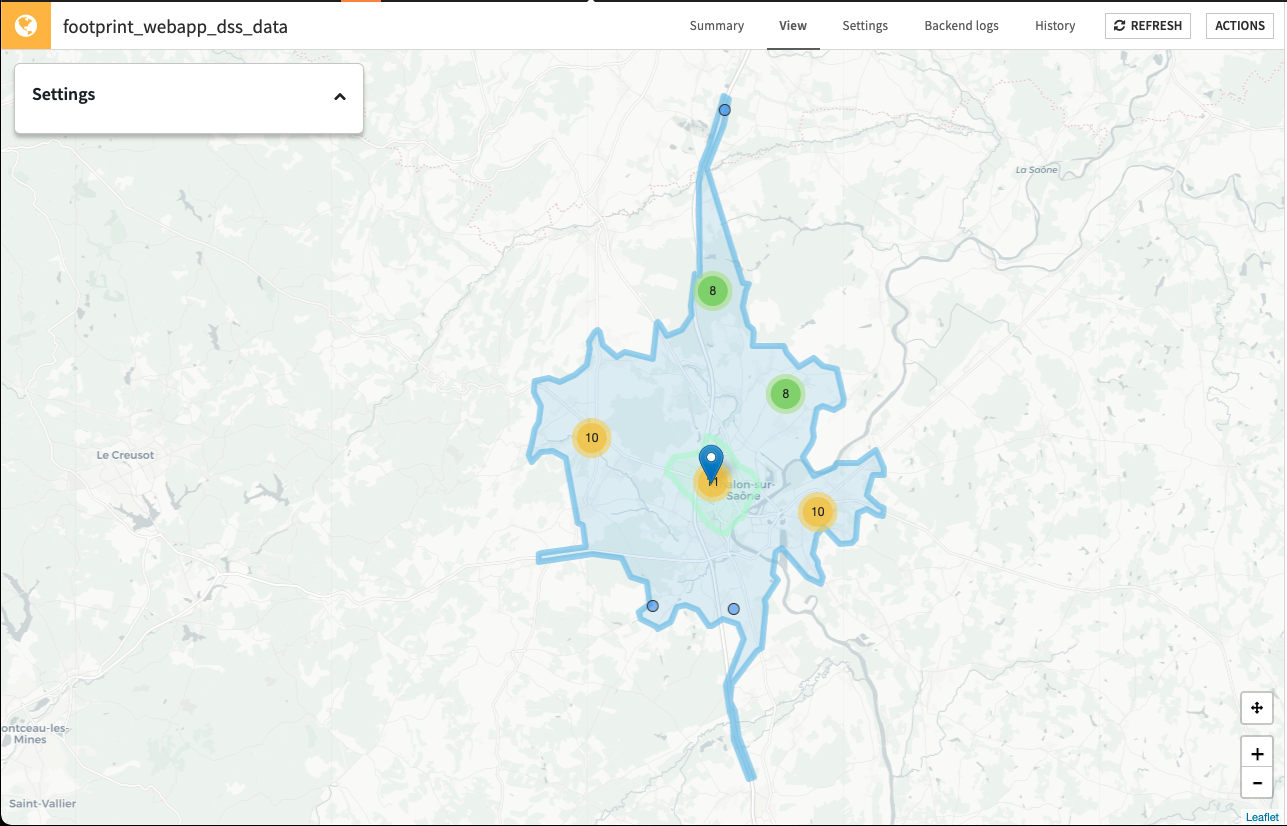
The Solution consists of a data pipeline that computes isochrones areas, further enriches the input data using these computed areas, and in doing so opens up a wide range of geospatial analyses. Analysts can input their own data and surface the outputs in a dashboard or interactive webapp to analyze their organization’s own distribution networks. Data scientists should use this Solution as an initial building block to develop advanced analytics / support decision making. Dataiku can also offer roll-out and customization services on demand.
Installation#
From the Design homepage of a Dataiku instance connected to the internet, click + Dataiku Solutions.
Search for and select Distribution Spatial Footprint.
If needed, change the folder into which the Solution will be installed, and click Install.
Follow the modal to either install the technical prerequisites below or request an admin to do it for you.
From the Design homepage of a Dataiku instance connected to the internet, click + New Project.
Select Dataiku Solutions.
Search for and select Distribution Spatial Footprint.
Follow the modal to either install the technical prerequisites below or request an admin to do it for you.
Note
Alternatively, download the Solution’s .zip project file, and import it to your Dataiku instance as a new project.
Technical requirements#
To leverage this Solution, you must meet the following requirements:
Have access to a Dataiku 13.3+* instance.
An API key for Openrouteservice or Here, a location platform for developers.
A Python 3.9 code environment named
solution_distribution-spatial-footprintwith the following required packages:
openrouteservice==2.3.3
folium==0.12.1
geopy==2.1.0
geopandas==0.8.2
Shapely==1.7.1
Flask==1.1.2
flexpolyline==0.1.0
scikit-learn==0.24.2
Install the following plugins:
-
To install this custom plugin, select Add Plugin > Upload, and select the zip file. You will be asked to create a Python 3.6 environment for the plugin.
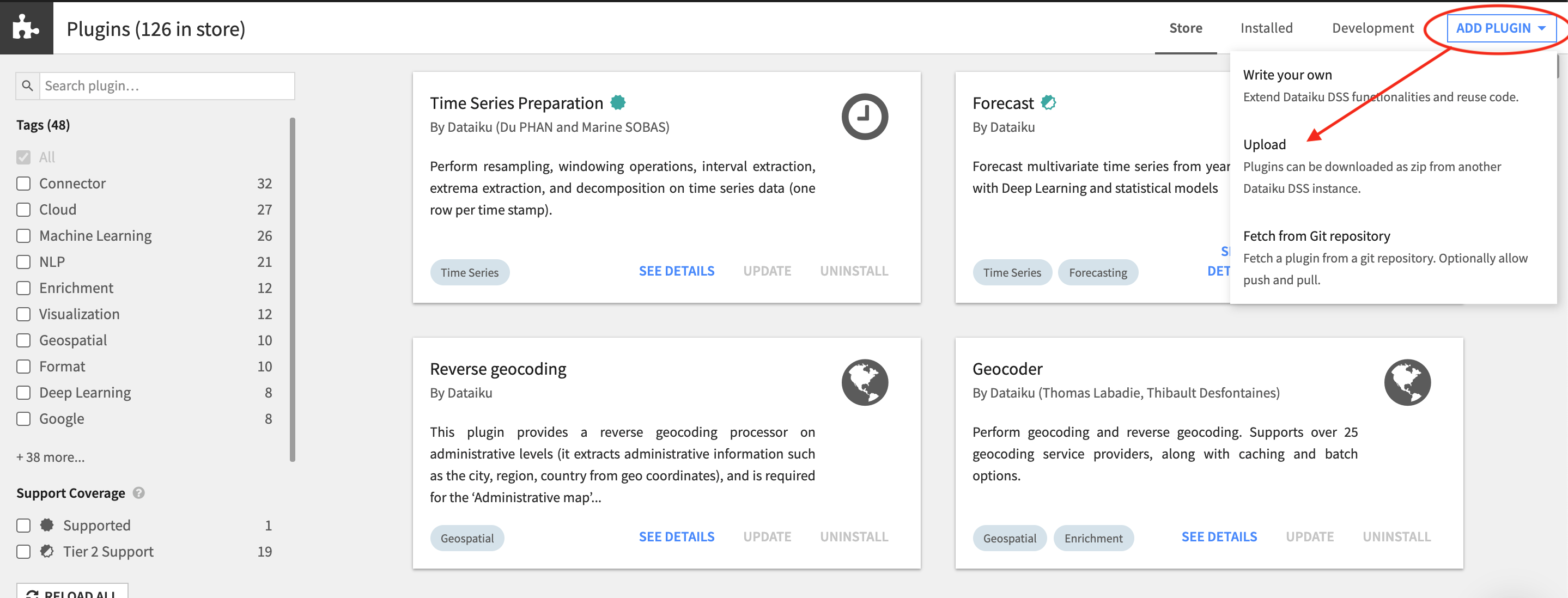
Note
The webapp requires this plugin, but it’s not necessary for the project, project setup, and dashboards to run.
Data requirements#
The Dataiku Flow was initially built using publicly available data consisting of various French grocery store locations in the Burgundy region of France and fictional customer data.
However, we intend for you to use this project with your own data, which you can upload using the Project Setup. Your input data should meet the general data requirements and will be renamed to the following datasets:
Dataset |
Description |
|---|---|
locations_dataset |
Meets the following data requirements:
|
customers_dataset (optional) |
Meets the following data requirements:
|
Workflow overview#
You can follow along with the sample project in the Dataiku gallery.
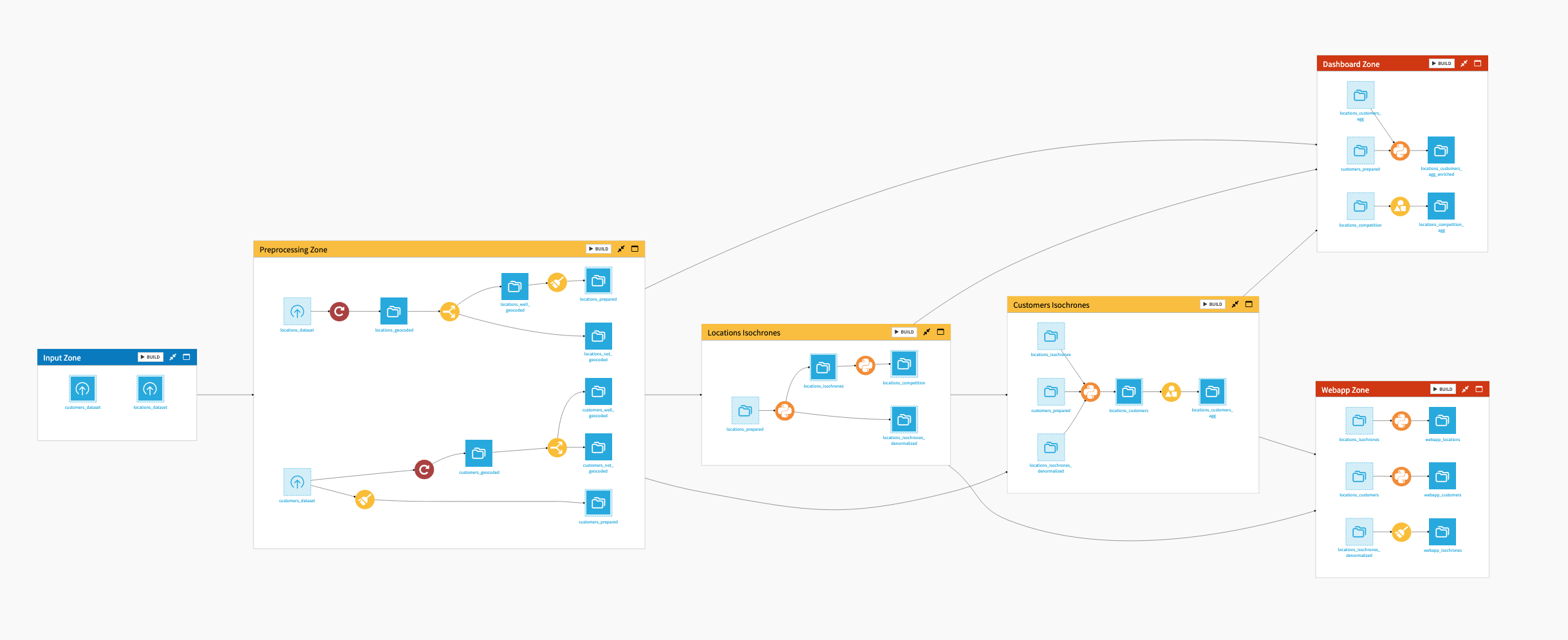
The project has the following high level steps:
Input your data and select your analysis parameters via the Project Setup.
Ingest and pre-process the data to be compatible with geospatial analysis.
Compute requested isochrones per location using the selected API service.
If you’ve provided customer data, identify and count the customers located within your distribution network isochrones.
Visualize the overlapping isochrones in your distribution network, as well as the locations of customers (if applicable) using pre-built dashboards.
Interactively analyze your distribution spatial footprint using a pre-built webapp.
Walkthrough#
Note
In addition to reading this document, it’s recommended to read the wiki of the project before beginning to get a deeper technical understanding of how this Solution was created and more detailed explanations of Solution-specific vocabulary.
Plug and play with your own data and parameter choices#
Once you’ve created the new project, you can walk through the steps of the Project Setup to add your data and select the analysis parameters to run.
In the Inputs section of the Project Setup, upload your distribution network dataset and, optionally, customer dataset. Refer to the Data requirements section above for the specific formatting requirements for your data. In this section, you will also need to specify the identifier column or columns (that is, those containing location data) and how your locations are defined (that is, latitude/longitude or addresses). It’s important that you select the location definition as this will impact which preprocessing steps run in the Flow.
Move on to the Isochrones section, where you will be asked to select an API service. At this time you should copy your API key and paste it into the correct field of the App. Here you will also be able to select the mode of transportation to base your isochrones off of, the isochrones to be computed based on travel time from a central location, and any other isochrone attributes of interest. Please note that isochrone attributes may vary between API providers.
Optionally, if you uploaded a customer dataset, the final Customers section of the Project Setup is where you can select which specific isochrones you want to search for customers within.
Once all the data and parameters are setups, you can click the Run Now button to start the full analysis.
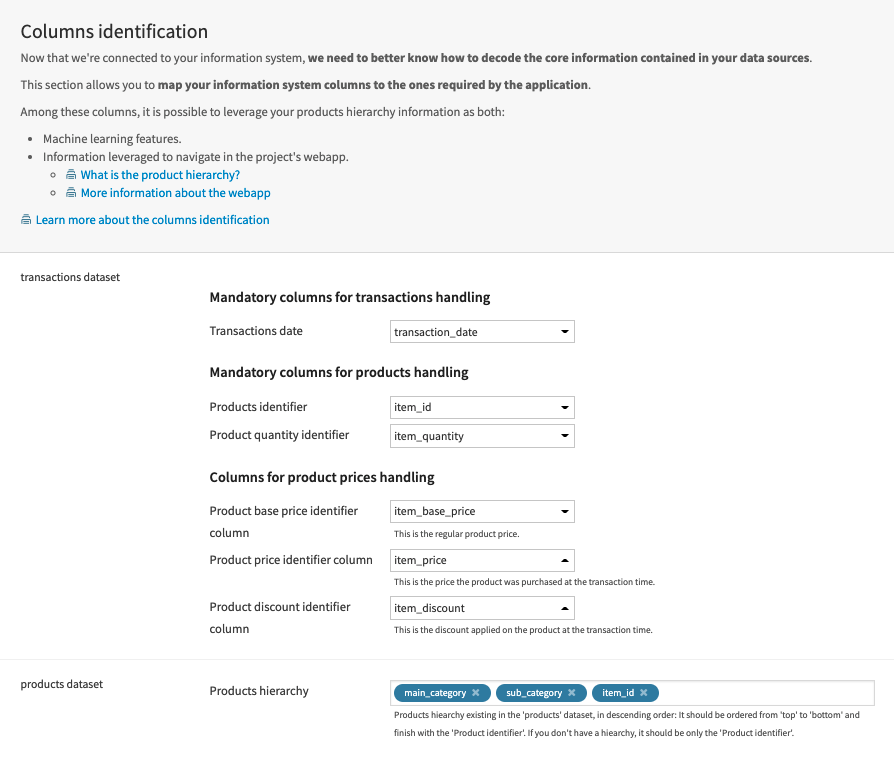
Once you’ve built all elements of the Project Setup, you can either continue to the Project View to explore the generated datasets or go straight to the dashboards and webapp to visualize the data. If you’re mainly interested in the visual components of this pre-packaged Solution, feel free to skip over the next section.
Under the hood: The Project Setup’s underlying Flow#
The Project Setup is built on top of a Dataiku Flow that has been optimized to accept input datasets and respond to your select parameters. Let’s walk through the different Flow zones to get an idea of how this was done.
Flow zone |
Description |
|---|---|
inputs_zone |
Contains the uploaded datasets for your distribution network (locations_dataset) and customer data (customers_dataset). |
Default |
Includes elements of your data that aren’t needed in the preprocessing zone (i.e data that’s already geocoded). |
preprocessing_zone |
Is dependent on the parameters you input to the Project Setup to define the type of your location identifiers.
|
isochrones_zone |
Includes 3 datasets of interest created by sending each row of the locations_prepared to the selected isochrone API service to compute the requested isochrones.
|
customers_zone |
If you provided customer data to the Project Setup, this zone will:
|
dashboards_zone |
Is dedicated to the isolation of all the datasets needed to build visualizations for the two project dashboards (see below for more details). |
webapp_zone |
Isolates the datasets used by the Solution webapp and can largely be ignored unless you wish to make changes to the webapp. Editing these datasets will break the webapp. |
Expanding analysis with an interactive webapp#
Although this Solution already contains high value visualizations in the pre-built dashboards, the geospatial analytic capabilities enable you to conduct your own visual analysis using a pre-built webapp for spatial analysis.
The webapp has several fields that you can use to impact the real-time map visualization. Please note, at this time the webapp doesn’t save your previous searches and will restore to its default empty state each time you reload it.
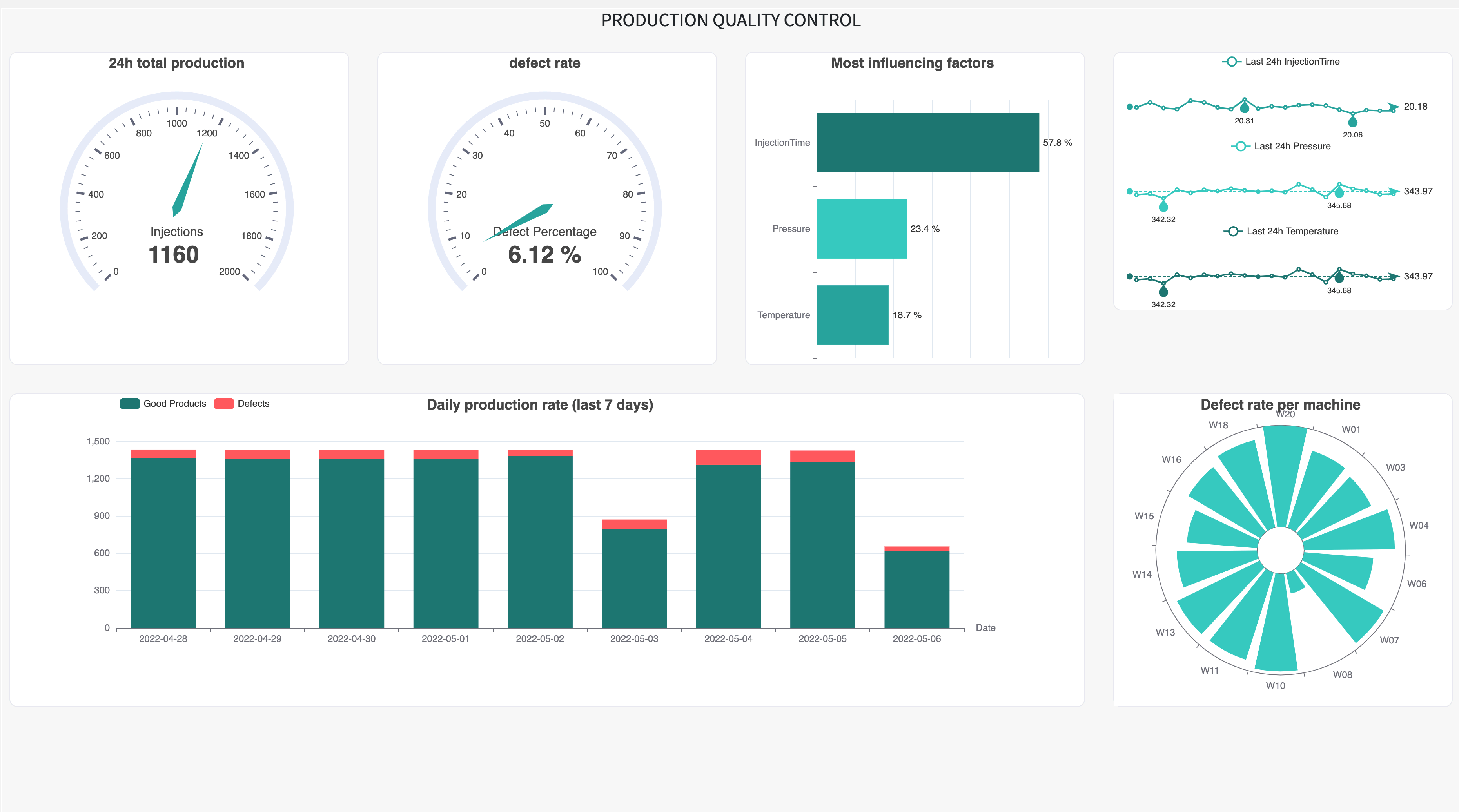
To begin, select the isochrones you would like to focus on from the full list of computed isochrones. The icon will change to reflect the transportation mode you previously selected in the Project Setup.
Within the Network Analysis section you can either individually add locations from your full list OR apply filters based on your location data (for example city, shop type, etc.).
The number of visualized points of sale out of the total sample of Points of Sale will update with the map. You can also increase or decrease the random sample size but please be wary that larger samples might cause the webapp to slow down.
You can display more information about a location by clicking on the location pin.
When displaying locations based on filter, clicking on the location pin will also allow you to deselect a specific location (that is, remove it from displaying on the map) or focus on a specific location (that is, remove all other locations from the map). This will push you into the From Location selection option. Switching back to From Filters will add all unselected locations back to the map.
Similarly, clicking on an area within an isochrone will display a card with the isochrone information
You can turn the Comparative Network Analysis section on or off by clicking the slider button. Here you can add locations for comparison using the same fields as in the network analysis section.
Doing so has many benefits including identifying isochrone cannibalization between points of sale or identifying strategic distribution points to support all your points of sale.
Sample size can also be independently increased/decreased here.
Lastly, if you provided customer data, you can turn on Customer Analysis with the slider button. You can’t add customers individually, but you can populate the map using filters based off of customer information in your customer dataset.
Only customers contained in the isochrones of a location will display on the map so you must select a location.
Customer detail will increase by zooming, and you can click on individual customer points to display the full card of customer information.
The sample size can be independently increased/decreased, and the value you select will be a random sample of customers per location. For example, a sample size of 100 when two locations are displayed will result in 200 customers displayed on the map.
Reproducing these processes with minimal effort for your data#
The intent of this project is to enable business users to understand how Dataiku can be to conduct a spatial exploration of your distribution network.
This documentation has provided several suggestions on how to derive value from this Solution. Ultimately however, the “best” approach will depend on your specific needs and data. If you’re interested in adapting this project to the specific goals and needs of your organization, Dataiku offers roll-out and customization services on demand.


